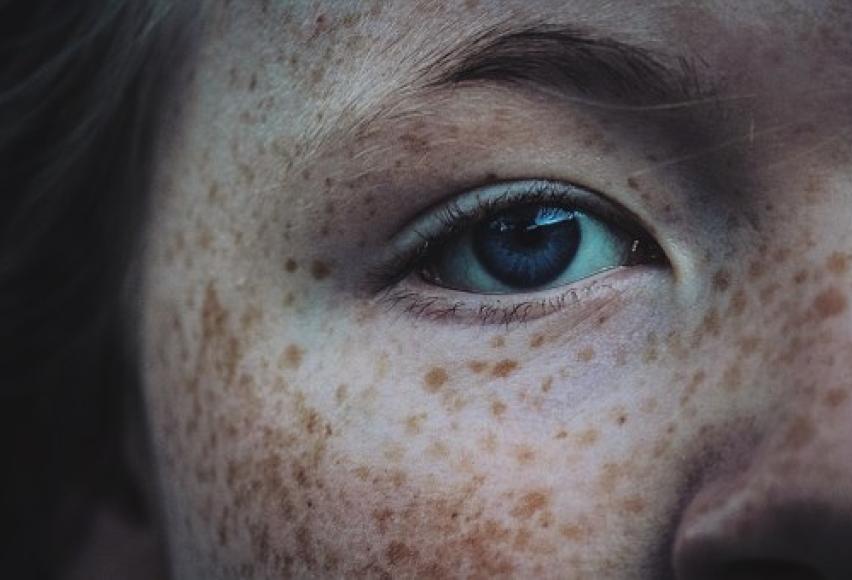How routines can help prevent skin picking

Online test
Find out the severity of your symptoms with this free online test
People suffering from compulsive skin picking may pick at normal skin variations such as freckles and moles, at pre-existing skin defects such as scabs, sores or acne blemishes, or in some cases imagined skin defects that are not actually visible by others. Individuals with compulsive skin picking not only use their fingernails to pick and scratch but may also use their teeth and/or other instruments such as tweezers, blades and pins. The compulsion to scratch, pick or peel pimples is called acne excorié and could be considered a subtype of compulsive skin picking. Although any part of the body may be attacked, often the face is the targeted area.
Triggers of skin picking
In many sufferers of compulsive skin picking, skin picking is preceded or accompanied by a high level of tension, anxiety or stress and a strong urge to itch or scratch. Often certain events or situations trigger skin-picking episodes. For some, the act of skin picking provides a feeling of relief or pleasure. Skin-picking episodes can be a conscious/ focussed response to anxiety or may be done as an unconscious / automatic response to external stimuli.
Skin Picking Treatments
Based upon the individual case, treatments to stop skin picking may involve therapy in cognitive and coping skills or in-depth psychological counseling. There is a growing body of evidence indicating picking behaviors are associated with anxiety and mood disorders. This type of disorder is often associated with an imbalance of the brain chemical, serotonin. For this reason, pharmacological therapy involving a selective serotonin reuptake inhibitor (SSRI) class of medication is frequently proving to be beneficial. In cases where acne blemishes trigger picking, surgical draining of the blemishes may help eliminate the targeted picking zone. Corticosteroids, antibiotics, and chemical peels may help to minimize outbreaks, allowing time to address the psychological issues involved and develop new habits so future acne flare-ups will be less tempting.
Where behaviors are evident that do not involve acne, such as scalp picking, nail biting, and scab picking, techniques concerning how to stop picking skin include avoidance or substitution therapies may be helpful. Avoidance therapies help the patient acknowledge the problem, identify the triggers, and teach coping skills that the patient can employ when the urge to pick strikes. Once the picker is able to recognize the problem, he or she can then choose to review the situation that triggers the urge to pick and psychologically work through those issues to eliminate or minimize the habitual behavior.
Routines that can help reduce skin picking
Once you have chosen a handful of ideas, begin to implement them.. Some individuals like to have a partner or friend subtly prompt them to use their skills (e.g., a look or a gentle shoulder tap), while others prefer to do this independently. Consider help when you need it. The following is a list of ideas, although it is not exhaustive:
- Use Silly Putty, Rubik’s Cube, or other fiddle gadgets to keep hands busy
- Draw, color, paint, clay, or do other crafts that keep hands busy
- Play with a smooth stone
- Use a pot scrubber, sand paper, dried glue, or emery board on the fingers to provide a rough/picking sensation rather than actual skin picking
- Brush a fluffy pet
- Chew gum, raw pasta, toothpick, sunflower seeds, or other items to keep hair out of mouth
- Wear Band Aids on finger tips or gloves to prevent finger grip
- Wear a hat to cover head or forehead
- Use lotion on hands or Vaseline on eyebrows/lashes to make pulling slippery
- Cover mirrors in paper to prevent looking at skin
- Get rid of, or give away for safe keeping, any implements used to aid in the pulling and picking, such as tweezers, needles, cleaning solution, etc.
- Sit in the middle of the couch when watching TV or reading, so elbows are not resting on the arm chair allowing hands to be closer to the head or face
- Study, read, or watch TV with others to prevent being alone when pulling or picking may occur
- Keep the bathroom door open to prevent long, private stays that can lead pulling or picking
- Sleep with hands in gloves or under the pillow
- Drive with both hands on the steering wheel
- Wear a specific scent or a charm bracelet on your wrist to alert you to your hands moving closer to your face/head.
- Using a variety of these ideas, create “kits” to place in rooms where pulling/picking most often occur. Include the car and your office.
- Consider rewarding yourself for using your kit, such as buying a magazine or treating yourself to a nice coffee, for every 10 kit uses.
source: https://www.anxietybc.com/
Online test
Find out the severity of your symptoms with this free online test
Start your journey with SkinPick
Take control of your life and find freedom from skin picking through professional therapy and evidence-based behavioral techniques.
Start Now



